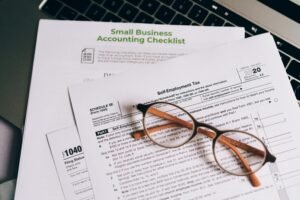Taking the leap into self-employment is both a bold and empowering decision, offering unparalleled freedom and the opportunity to create something uniquely your own. However, with independence comes responsibility. As a self-employed professional, you wear many hats—you’re the boss, accountant, marketer, and operations manager all in one. This guide explores the essentials of self-employment in the UK, ensuring you have the knowledge, tools, and strategies to succeed.
Embracing the Self-Employed Lifestyle
Self-employment provides the flexibility to set your own schedule, select your clients, and focus on projects you’re passionate about. Whether you’re a freelancer, contractor, or sole trader, you are responsible for every aspect of your business—from acquiring clients to managing finances and ensuring compliance with HMRC regulations.
The UK’s self-employed population spans various professions, from creative industries to tradespeople. Despite the differences in roles, all self-employed individuals must manage financial, legal, and administrative responsibilities. Success comes from balancing creative freedom with effective management.
Self-employed individuals often find the shift from traditional employment to self-employment both challenging and rewarding. With the flexibility comes the need for disciplined time management, financial control, and constant learning. This lifestyle is not just about freedom—it’s about mastering various aspects of running a business and developing the resilience to navigate through both good times and challenges.
What Are the Benefits of Being Self-Employed?
- Autonomy and Flexibility
The ability to set your own schedule and work from anywhere is a significant advantage. Whether you prefer early mornings, late nights, or working from a coffee shop or home office, the flexibility of self-employment allows you to work in a way that suits your lifestyle. This autonomy can be particularly beneficial for individuals with other commitments, such as family or personal projects. - Pursuit of Passion
Self-employment allows you to turn a hobby or passion into a rewarding career. Many successful entrepreneurs started out as self-employed individuals, driven by a love for what they do. As a freelancer or small business owner, you can focus on the areas you enjoy most, whether that’s writing, designing, consulting, or working hands-on in your trade. The ability to pursue your passion is often a driving force behind the success of self-employed professionals. - Earning Potential
You’re in control of your income, with opportunities to earn more as your business grows. The more clients you attract or the better your service offerings become, the more you can earn. Unlike salaried positions, where your earnings are fixed, self-employment offers the potential for unlimited income, particularly if you can scale your business or establish long-term, high-value client relationships. - Personal Growth
Managing all aspects of your business enhances problem-solving skills, creativity, and resilience. Running a business is not just about making money; it’s about constant learning and growing. As you face different challenges—whether managing cash flow, solving client problems, or dealing with legal obligations—you develop skills that are applicable both in business and personal life.
Laying the Foundation for Success
Starting a self-employed career is more than just hanging a sign and waiting for clients. It involves strategic planning, legal compliance, and ensuring your business operations are sound from day one.
Step 1: Register with HMRC
The first step to becoming self-employed is registering with HM Revenue & Customs (HMRC). This involves registering for Self Assessment to report your income and pay taxes. Registration must be completed by 5 October following your first trading year. Failing to register on time can lead to penalties.
Upon registration, HMRC will issue you with a Unique Taxpayer Reference (UTR), which is crucial for filing tax returns and communicating with HMRC.
Step 2: Choose Your Business Structure
Your business structure has long-term implications for your taxes, liabilities, and administrative responsibilities. You must decide whether to operate as a sole trader, a partnership, or a limited company. Here’s a breakdown of each:
- Sole Trader: This is the simplest structure, where you are personally liable for any debts incurred by your business. While you have full control, this also means you take on all the risk. You file taxes through Self Assessment each year.
- Partnership: A partnership involves two or more individuals who share ownership of the business. Responsibilities and profits are divided according to the agreement between partners. Like sole traders, partners are personally liable for the debts of the business.
- Limited Company: A limited company is a separate legal entity, meaning your personal assets are protected from business liabilities. This structure requires stricter reporting and additional taxes, including Corporation Tax on profits. It can be a good option for those looking to scale their business and limit personal risk.
Step 3: Create a Business Plan
A solid business plan is essential for self-employed individuals, whether you’re starting a side gig or building a full-time enterprise. Your plan should clearly outline:
- Goals: Both short-term and long-term objectives. Setting clear targets will help you stay focused and track progress.
- Target Market: Understanding your ideal clients or customers is critical to your marketing strategy and business success.
- Pricing Strategy: Competitive and sustainable pricing ensures your services are priced well in the market and align with the value you offer.
- Financial Projections: Understanding your income and expenses helps you plan for growth, avoid cash flow issues, and make informed financial decisions.
Success Story
Emma, a self-employed photographer, created a comprehensive business plan detailing her target clients, services, and projected income. By implementing this plan, Emma successfully doubled her client base and increased her earnings by 40% within just one year.
Mastering Financial Management
Proper financial management is one of the cornerstones of success in self-employment. As a self-employed individual, you need to monitor your cash flow, manage expenses, and ensure timely tax payments.
Separate Personal and Business Finances
Opening a dedicated business bank account is one of the first steps towards clear financial management. This separation ensures that personal expenses are not mixed with business ones, making accounting much easier. It also ensures you’re in the best position for tax time and reduces the risk of overlooking deductible expenses.
Track Income and Expenses
Digital accounting tools such as QuickBooks, Xero, or FreeAgent help streamline financial management. These tools not only allow you to track income and expenses but also provide you with reports and insights on your financial health. Keeping detailed records ensures that you can:
- Identify deductible expenses (such as office supplies, travel, or marketing).
- Simplify tax returns.
- Assess your profitability and adjust your strategy accordingly.
Case Study
Jane, a freelance graphic designer in London, initially mixed her personal and business finances, leading to confusion and missed expense claims. After setting up a dedicated business account and using accounting software, Jane improved her financial management and maximised her tax deductions.
Understanding Tax Obligations
As a self-employed individual, it’s crucial to stay on top of your tax obligations to avoid penalties.
Self Assessment Deadlines
The deadlines for Self Assessment are as follows:
- 5 October: Register for Self Assessment.
- 31 January: Submit your online tax return and pay any tax due for the previous year.
National Insurance Contributions (NICs)
Self-employed individuals must pay:
- Class 2 NICs: £3.45 per week if profits exceed £12,570 annually.
- Class 4 NICs: 6% on profits between £12,570 and £50,270, and 2% on profits above £50,270.
VAT Registration
If your turnover exceeds £90,000 annually, you must register for VAT. However, if your turnover is below this threshold, registration is voluntary. Many smaller businesses choose voluntary registration to reclaim VAT on purchases, which can be a great way to lower business costs.
Case Study
John, a self-employed plumber, delayed his VAT registration despite exceeding the turnover threshold. HMRC imposed penalties and backdated VAT payments, straining his cash flow. This case serves as a reminder of the importance of timely registration and compliance with tax rules.
Overcoming Common Challenges
Self-employment can be rewarding, but it comes with its own set of challenges. Here are some of the most common issues faced by self-employed individuals, along with strategies to overcome them.
Inconsistent Income
As a self-employed professional, you may face fluctuating income. Building a financial buffer during high-earning periods will help you cover lean months. Additionally, using budgeting apps such as YNAB (You Need A Budget) can help you plan for irregular income and keep cash flow steady.
Work-Life Balance
Without the structure of traditional employment, maintaining a healthy work-life balance can be challenging. Setting clear boundaries, such as dedicated working hours, and prioritising self-care are essential. Tools like Asana or Trello help organise tasks and maintain focus, ensuring you avoid burnout.
Case Study
Sarah, a content writer, was juggling multiple clients and struggling to maintain balance. By setting specific work hours and using Asana to manage her projects, Sarah increased productivity while reducing stress.
Maximising Tax Efficiency
Tax efficiency goes beyond simply meeting deadlines. It involves understanding which expenses are deductible, how to minimise your taxable income, and leveraging tax allowances. Common deductible expenses include:
- Business Travel: Keep track of mileage, transport fares, and other travel-related costs.
- Home Office Costs: You can claim a flat rate for using your home as an office or calculate actual
expenses like utilities and internet.
- Professional Development: Training courses and seminars related to your business can be claimed as business expenses.
Case Study
Tom, a freelance consultant, had always used his home office but didn’t realise he could claim home office costs. After speaking with an accountant, Tom successfully reduced his taxable income and saved hundreds in tax payments.

How Legacy Accounting Can Help
Navigating the complexities of self-employment can feel overwhelming, but you don’t have to do it alone. At Legacy Accounting, we specialise in helping self-employed professionals like you maximise financial efficiency and comply with tax regulations.
We offer expert guidance on:
- Managing your tax obligations
- Identifying deductible expenses
- Navigating VAT and National Insurance contributions
- Streamlining your financial management
Whether you’re just starting out or looking to optimise your existing business, we’re here to help you achieve long-term success.
Contact Us
Email: info@legacyaccounting.co.uk
Phone: 01235 820000
Website: legacyaccounting.co.uk
Explore More


